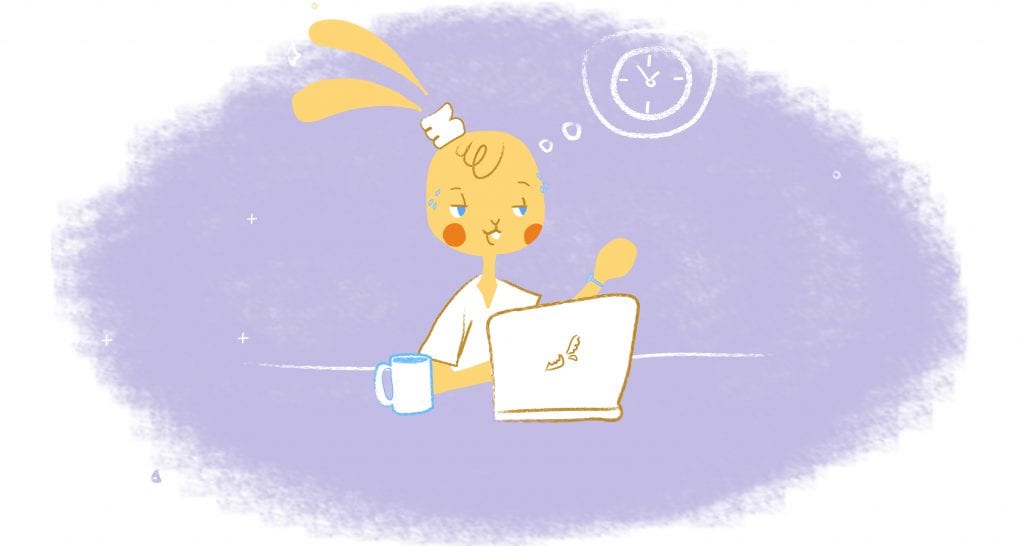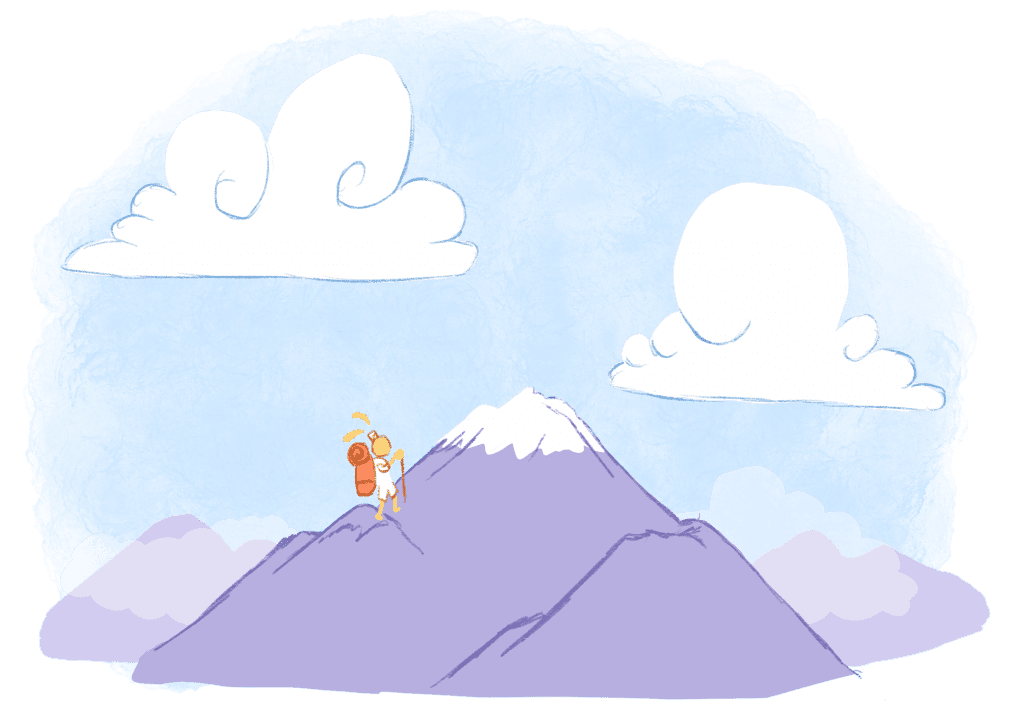

Well, I’m dragging today. For some reason, I woke up in the middle of the night and couldn’t immediately fall back to sleep. Needless to say, when my alarm went off this morning I wanted to hit snooze — Okay — I didn’t hit snooze because I leave all my devices in another room at night. When you don’t sleep well, you still have to get your work done. Here are 15 ways to stay awake at work.
But, how am I going to make it through the entire day without filling up an IV and mainlining some caffeine? Well, here are 15 hacks I’m going to try so that I’ll be able to stay awake at work.
1. Keep a consistent sleep schedule.
I’m aware that this is a luxury that not everyone can afford, such as parents of newborns or new puppy owners. However, if possible, maintaining a consistent sleep schedule should be a top priority.
See, when you don’t get enough sleep your productivity suffers. Mainly, this is because you’re, well, tired and sluggish. You’re also prone to making more mistakes and getting burned out. It can also negatively impact your mental and physical health as well.
With that in mind, if you want to be more alert and energetic at work, then you definitely between 7 and 9 hours of sleep each night. And, the first place to start is going to bed and waking up at the same time daily. For example, your sleep schedule could be between 10 pm and 6 am. If that works for you, then make sure that you stick to it as closely as possible — even on weekends and vacations.
But, there’s more to it than just tossing and turning in your bed for 7 or 8 hours. You also want to ensure that it’s a good night’s rest. And, that’s possible by:
- Avoiding blue light from electronic devices at least 30 minutes before bed.
- Having a sleep-including snack like apple slices.
- Exercising in the morning.
- Not taking naps or drinking caffeine too late in the afternoon.
- Engaging in a relaxing evening routine like reading, meditating, and planning out tomorrow.
- Keeping your bedroom dark and cool.
2. Drink caffeine more strategically.
Full disclosure — I like to make coffee drinking an event and I think coffee drinking is almost genetic in my office — because it seems a common thread running through my teammates and all of our family members.
Here’s the mistake that most people seem to make. I see everyone start to yawn — they say they feel groggy, and then the whole office — en masse — immediately pours themselves a big old cup of Joe. Even the tea drinkers head over for a fillup.
“Caffeine is a (mildly) addictive drug, so even small unintentional behaviors like drinking a cup just to have a reason to get up from your desk can quickly become chemically reinforced habits,” Jake Knapp and John Zeratsky write in their book, “Make Time: How to Focus on What Matters Every Day.”
Instead, the two former Google designers suggest that if you really want to reap the benefits of caffeine, you need to:
- Wait to caffeinate. Why? It has to do with stress hormones, particularly cortisol. Usually, these are highest between 8 am and 9 am. So, if you were to have caffeine during this time, it wouldn’t really help. A better idea is to wait until after your cortisol begins to drop.
- Don’t wait until you’re tired. “The tricky thing about caffeine is that if you wait to drink it until you get tired, it’s too late.” For instance, if you crash at one pm — then have caffeine at least 30-minutes prior.
- Caffeinate and nap. “The caffeine takes a while to be absorbed into your bloodstream and reach the brain,” the authors note. “When you wake up, the receptors are clear [of adenosine] and the caffeine has just shown up. You’re fresh, recharged, and ready to go.”
- Drink tea of espresso in the afternoon. Since coffee has a lot of caffeine in it, it’s recommended that you switch to a drink with less amount. It will keep your energy levels consistent.
- Time your last drink. The half-life of coffee is about 4 to 6 hours. That means if you have your last sip at 4 pm it may not be out of your system until 10 pm. If you’re trying to get to bed at 9, this presents an obvious problem.
3. Stay hydrated.
Speaking of fluids, you need more to drink then just coffee of tea. After all, because both are diuretics, they can lead to dehydration. As a result, this can cause fatigue.
As Amy Bortnik explains in an article for ACTIVE, this is because fatigue “impacts the flow of oxygen to the brain and causes your heart to work harder to pump oxygen to all your bodily organs.” In turn, “making you more tired and less alert.” In short, if you want to stay energized, drink plenty of water.
Want to drink more water? Well, make it a part of your morning routine by slamming a glass first thing. You could also buy a water bottle you like and always keep it on your desk. And, if you want some flavor, add some fruit, like lemons.
4. Eat healthily.
I’m sure you’ve heard this adage a million times. But, that’s because it’s true. I mean if you scarf down a bacon cheeseburger, fries, and chocolate milkshake for lunch, how energetic and productive do you think you’ll be for the remainder of the day?
The same goes for snacks like candy or chips. They might satisfy your carving and taste pretty good, but the fat and sugars will leave you feeling sluggish or sleepy.
“If you want to boost your focus and your energy levels, choosing the right snacks is a considerable first step,” writes Angela Ruth in a previous Calendar article. Some suggestions are almonds, walnuts, apples, flax seeds, popcorn, or dark chocolate.
“Healthy snacks are essential, but what about when you’re in the mood for a more substantial meal?” asks Angela. “There are plenty of protein options that can keep your productivity high.” Examples are eggs, fatty fish, turkey, and greek yogurt.
5. Take a nap.
Short naps between 15-30 minutes can be beneficial. According to the Sleep Foundation, this is because naps “can restore alertness, enhance performance, and reduce mistakes and accidents.” They also have psychological benefits like helping you relax and rejuvenate.
How can you embrace a napping culture? Well, get over your misconceptions. Just because you’re taking a nap doesn’t mean that you’re lazy or slacking off. Next, find a quiet place where you can close your eyes for a couple of minutes. And, try to do this trying a break so that you aren’t literally “sleeping on the job.”
6. Pinch yourself.
Bear with me here, this may seem out little out there.
Dr. Jedidiah Ballard, a former U.S. Army Ranger and now an osteopathic emergency physician and assistant professor of emergency medicine for the Medical College of Georgia at Augusta University would od off during long and dull classes during Ranger school. So, he would take the non-sharp end of a pen or pencil and jab himself in the thigh.
“The pain stimulus kicks up the adrenaline a little bit, which wakes you up,” he said. “If you can do it enough to where you’re actually a little bit mad at yourself, the anger will keep you going for a while.”
If you’re not comfortable with this technique, you could wear a rubber band on your wrist. Whenever you get sleepy, snap it. Eventually, just the thought of this could give you a jolt.
For less painful strategies, press on your nose or tug on your ears.
7. Get some sun.
Vitamin D from natural sunlight doesn’t just feel good. It also suppresses melatonin. If you weren’t aware, this is the hormone that regulates your sleepiness and wakefulness. So, the next time you feel drowsy, get outside for a couple of minutes for a quick pick-me-up.
8. Inhale sharp smells.
Certain scents, like coffee brewing, can help increase alertness. Sharp or pungent scents can also have the same effect. These would include citrus, eucalyptus, jasmine, bergamot, or peppermint. Either invest in scented candles or oil diffusers. Or, just rub a little on your hands or temples.
9. Take a breath.
As someone who experiences anxiety, breathing exercises have been an effective way to make me feel more at ease. However, these same exercises can increase circulation, which in turn, can give you an energy boost.
10. Schedule frequent breaks.
Try all you might, it’s just not feasible to work non-stop. I understand that you have a ton of work to get to. But, we can only focus for so long. Besides, breaks allow us to refresh and recharge.
The key though is these breaks wisely. For example, instead of just sitting in your office chair watching YouTube videos, go for a walk outside. Do some stretches in your office. Or, catch a little cat nap.
11. Get the blood flowing.
You don’t have to wait until a scheduled break to get the blood flowing. Invest in a standing desk. Other opinions could be a treadmill desk or balance ball chair.
Even if you love your current desk and chair setup, there are ways to move around. It could be as simple as neck rolls or heel lifts. Of, you could try out some exercises like arm circles, leg extensions. Oblique twists, seated press-ups, knee tucks, or chair slides.
12. Keep it cool.
Perhaps on the easiest and fastest way to wake yourself up is to splash your face with cold water. The science behind this is that it draws circulation upward. As a result, this will give you a temporary energy boost.
If you don’t want to walk around with a damp face, obviously you would dry your face off before returning to work, just run some cold water over your wrists. Or, take an ice pack and place it on the back of your neck.
13. Let the records play.
You don’t have to literally spin records — unless that’s you’re thing when working from home. The idea is that when you feel drowsy, crank up the music that gets you amped, such as loud and rhythmic music. As noted in The Guardian, this is because “music holds the keys to your body’s pharmacy, and can promote or suppress the release of” chemicals like adrenaline.
Just be mindful of others if you’re working in a shared space. You don’t want to disrupt them, so make sure that you put on a pair of headphones.
14. Interact with others.
During your break, go over to a colleague and strike up a conversation — just don’t interrupt them if they’re busy. Having this face-to-face interaction improves your mood and can stimulate your brain if you’re brainstorming or discussing a common interest.
15. Capitalize on ultradian rhythms.
Ultradian rhythms are biological cycles that alternate between high-frequency brain activity and lower-frequency brain activity. In other words, you have bursts of energy for about 90-minutes, followed by a 20-minute lull.
“Instead of fighting against them, use your ultradian rhythms to your advantage,” suggests Deanna Ritchie in a previous Calendar article. “Using any pattern or rhythm means spending those periods of high-frequency brain activity on your most challenging and essential tasks.” As an example, “if your most wide-awake, alert time of day is between 9 am, and 10:30 am, then block that timeframe out for your top priority of the day.”
What about those periods of lower-frequency brain activity? “Those 20-minute blocks should be spent on activities that either don’t exhaust too much energy or help you recharge,” recommends Deanna. “Examples would be cleaning out your inbox, going for a walk outside, reflecting, or preparing for your next meeting.”











Max Palmer
I'm Max, and I love helping businesses we work with expand their businesses online. Growth potential is what we strive for! I help with press, productivity and overall business needs for business owners.